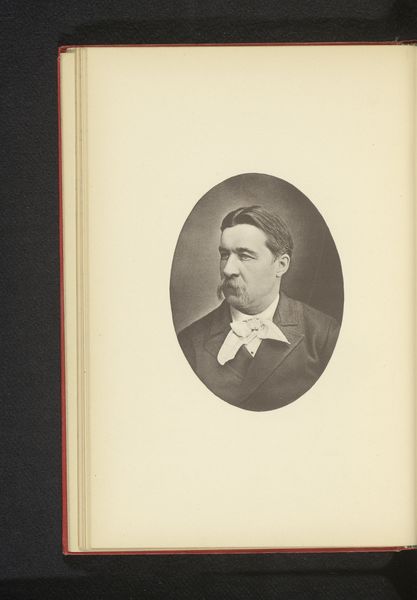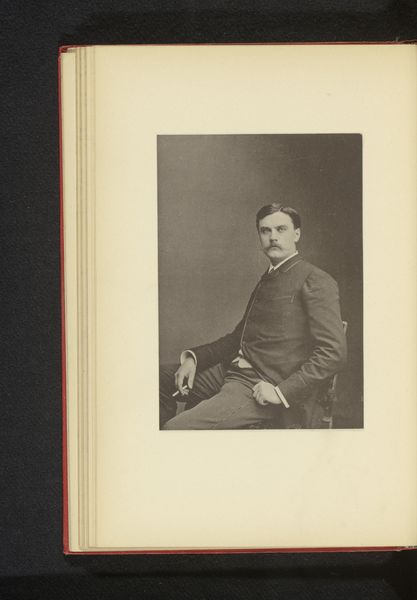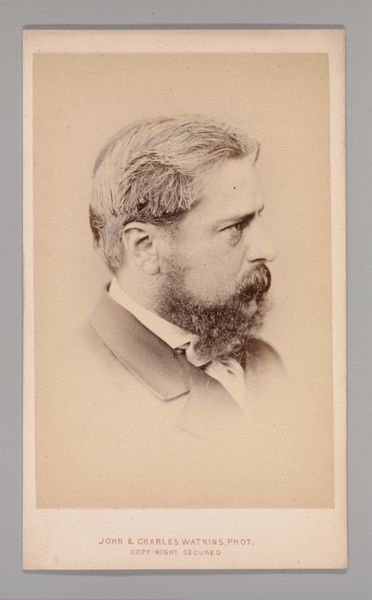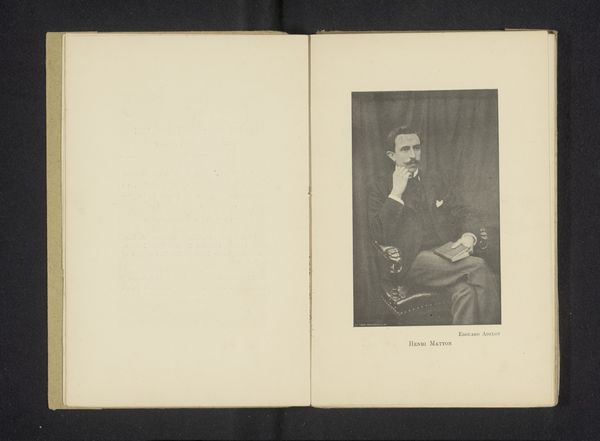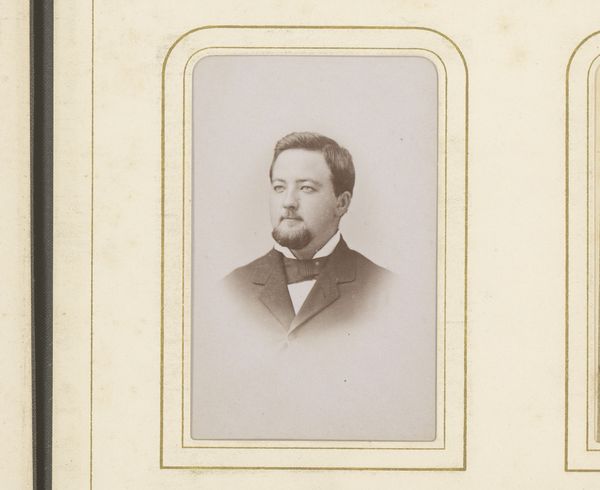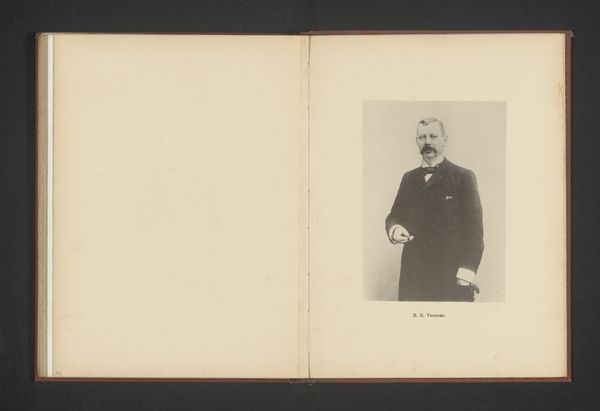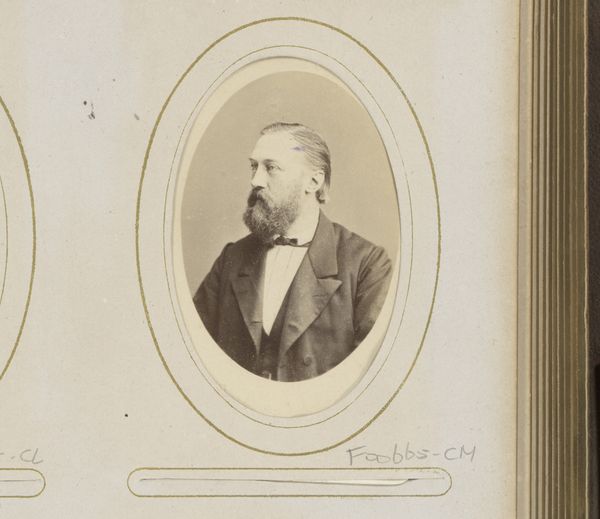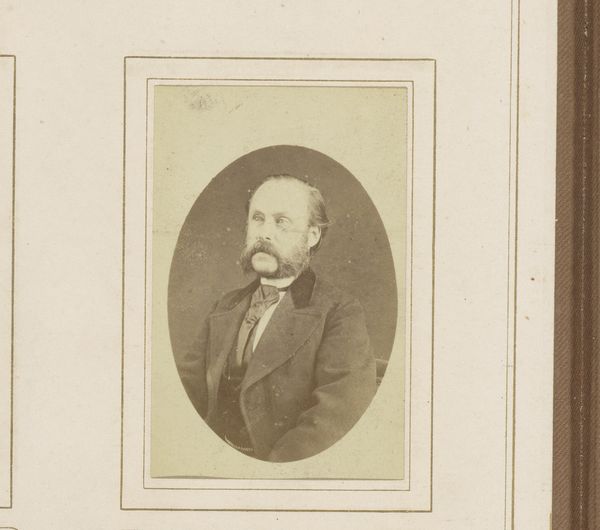
Dimensions: height 158 mm, width 96 mm
Copyright: Rijks Museum: Open Domain
Curator: Here we have a fascinating example of photographic portraiture, "Portret van Gunnar Berndtson", a gelatin-silver print created before 1883. Editor: The sepia tones lend it a certain melancholy, don't you think? It has an air of serious contemplation. Curator: Absolutely. The man seems deeply introspective. Consider how photographic portraits were deployed at this time, functioning almost as calling cards for those in upper-class social circles. Berndtson was a Finnish painter. It feels essential to analyze photography’s social role, a shift in representation that democratized the portrait in some ways but reinforced certain ideals in others. Editor: Yes, and while seemingly straightforward, I wonder about the staging itself. The carefully arranged suit, the hint of a pocket square, the coiffed hair – these elements construct an image of cultivated masculinity that should also be understood as codes for social elevation. Curator: Precisely! Think about how Berndtson, as a portrait painter himself, may have actively collaborated in crafting his own photographic image, carefully curating his presentation for the world. It underscores that photographs never tell the "whole" story. His romanticism as an artistic influence clearly emerges. The gaze directs viewers outside the immediate realm of the photograph itself, toward aspiration. The very lack of vibrant color reinforces the internal. Editor: And what about the historical context of Romanticism in Finnish art during that period? Weren't they heavily involved in questions of national identity? How much of this aesthetic direction then is deliberately aligning itself with some concept of cultural pride? Curator: Exactly. Considering it from the standpoint of cultural nationalism prevalent then offers exciting layers to interpretation, as this single photographic portrait exists within a web of personal aspiration and socio-political signaling. The very nature of photography, often assumed objective, gets complicated when seen through these lenses. Editor: That's so true, even this "simple" image resonates much louder when understood from those positions. Curator: Indeed. Thinking through these perspectives together helps us engage art history in new and relevant ways, connecting historical pieces with complex dialogues.
Comments
No comments
Be the first to comment and join the conversation on the ultimate creative platform.
